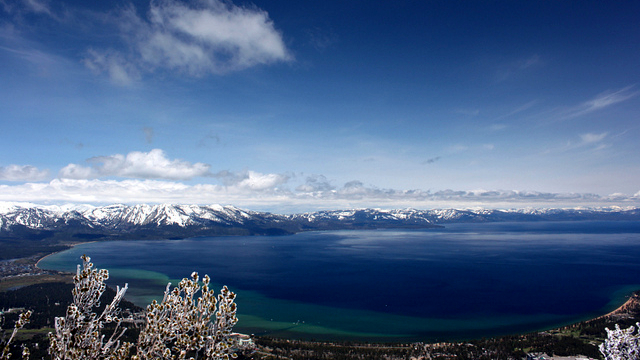A few weeks ago, scuba divers in Lake Tahoe found the body of a man who had drowned in the lake 17 years ago. Still in its wetsuit, the body was very well preserved. Because the water in this high alpine lake is so cold, decomposition is very slow. This fact has spawned rumors, the most famous of which involves Jacques Cousteau and still makes me shudder, years after I first heard it. Apparently, years ago, Cousteau went scuba diving in Lake Tahoe. He emerged from the water shaken, but not with cold. He said, “The world is not ready for what I have seen.”
What did Cousteau see? Maybe the bodies of unlucky gamblers who crossed the Mafia in 1950s Reno. Or maybe it was Tahoe Tessie, the Loch Ness likeness of the lake. But, in its coverage of the recent discovery, the LA Times said that Cousteau never actually visited Lake Tahoe. The Cousteau story may be a myth, but it is no less chilling, because the physical conditions of the lake are such that bodies could still be drifting beneath the surface.
At 1645 feet (depending on the level of water in the basin), Lake Tahoe is the second deepest lake in the US. (Crater Lake in Oregon is the deepest in the country. The world record goes to Russia’s Lake Baikal, which is some 5,369 feet deep.) Lake Tahoe is located between two fault zones, and it formed through a tectonic combo of uplift and subsidence. The Sierra Nevada mountains rose up on the west and the Carson Range rose up on the east. The rock underneath the lake sank down to form a flat-bottomed basin called a graben. The word is German for “grave” and refers to the lake’s low-lying nature—and perhaps also to whatever Cousteau purportedly saw underwater.
Lake Tahoe is cold. The temperature at the surface of the lake varies, from a low of about 40 degrees in February or March to a high of about 75 degrees towards the end of the summer. Below the surface, the temperature is a chilly 39 degrees. In the winter, when the surface and the deep waters are relatively close in temperature, the wind blowing across the surface of the lake mixes the water. This brings oxygen from the surface layer down to the depths, and nutrients from the depths up to the surface.
In 2010, the mixing occurred from the surface down to about 550 feet, because the surface of the lake remained relatively warm throughout the winter. In previous years, mixing has occurred down to about 1500 feet. Since the 1970s, the surface layer of the lake has gotten warmer in the summer, and it retains that heat throughout the winter. Just like in the ocean, stratification—a warm surface layer that is distinct from the cold bottom layer—means it is hard to get the surface and deep waters to mix.
